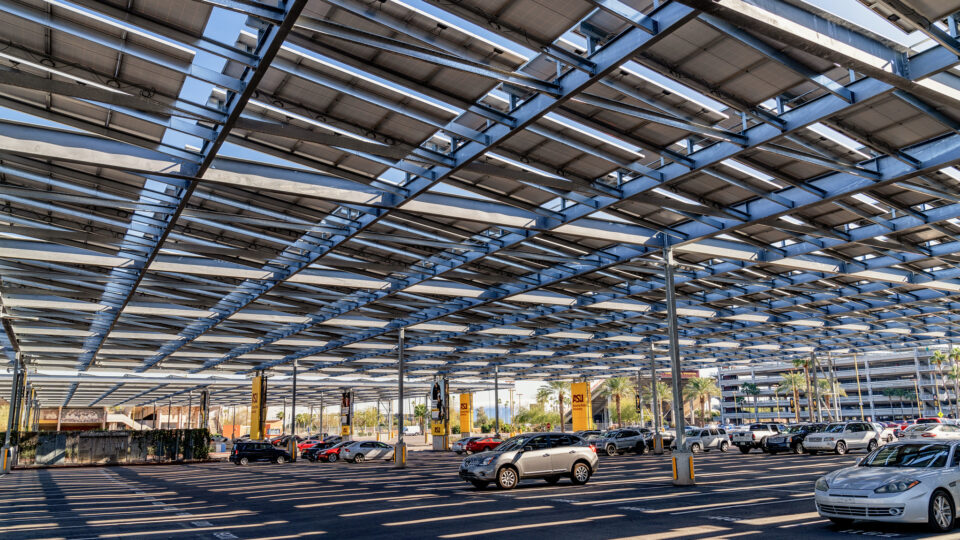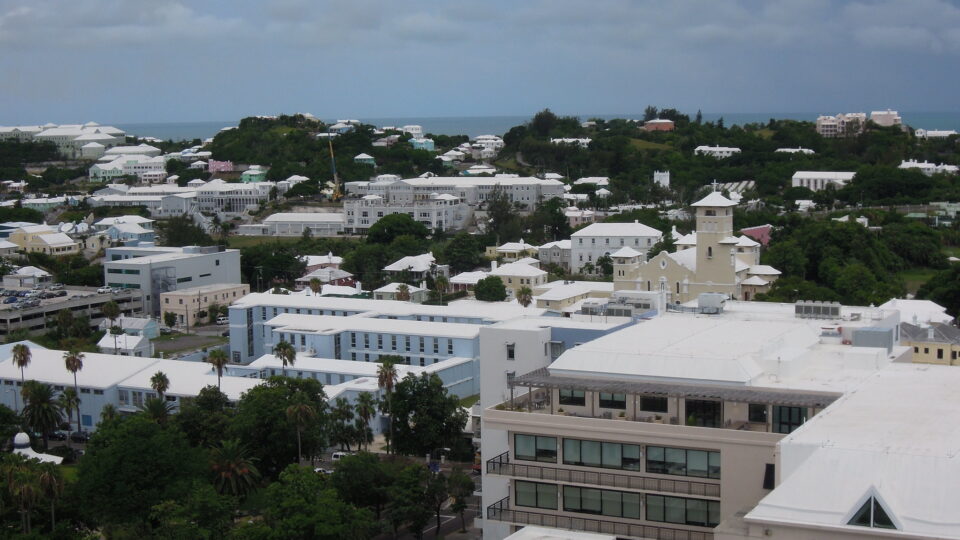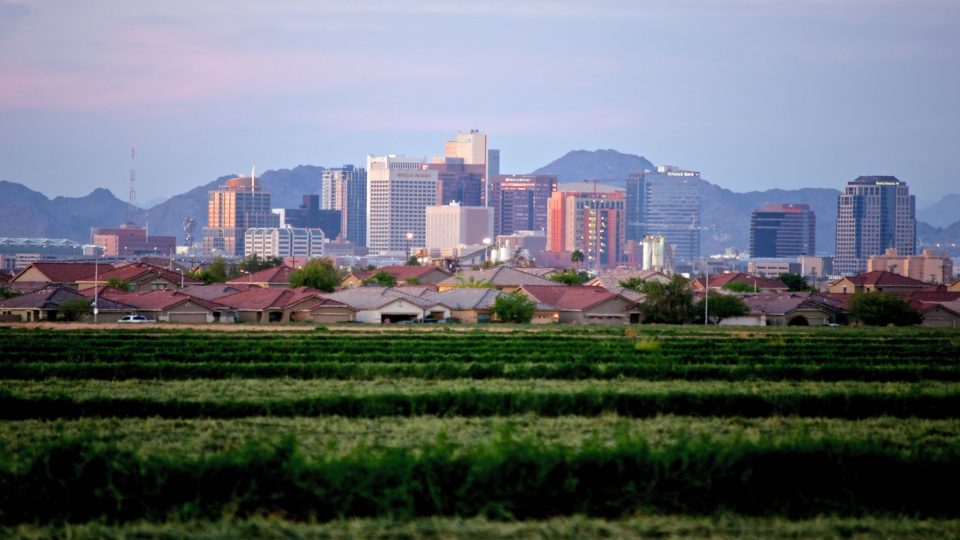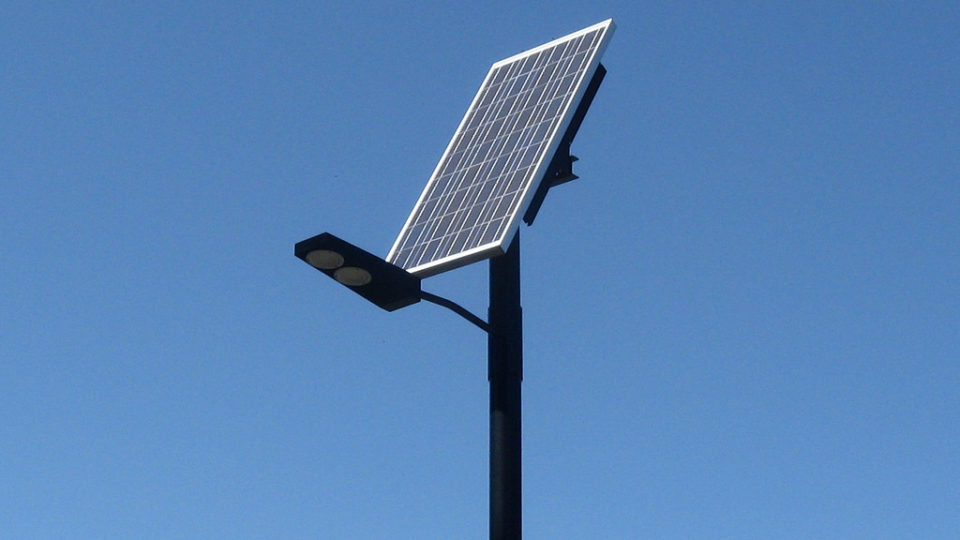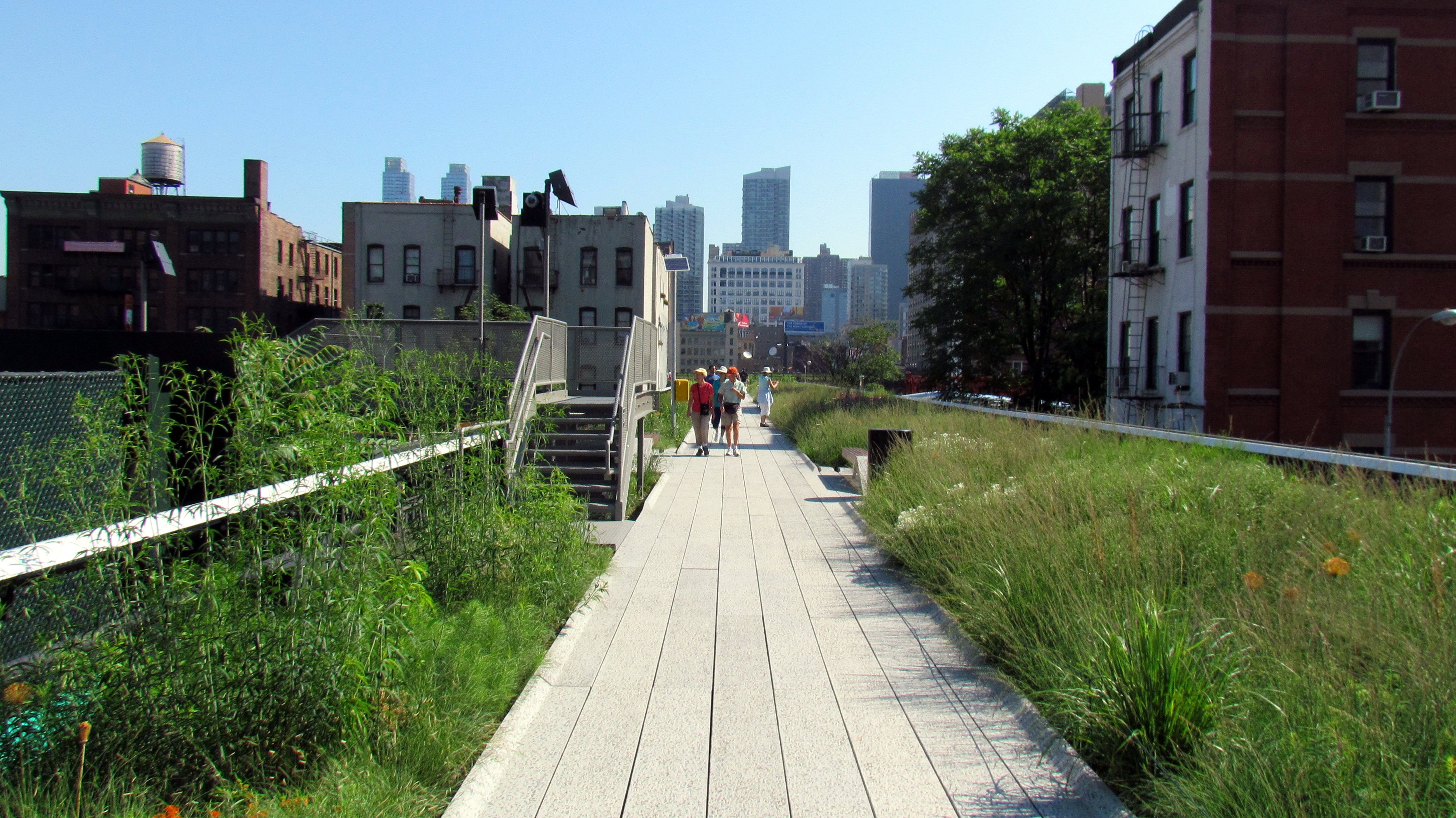There are plenty of solar panels on residential rooftops but there are also increasing numbers of arrays of them on croplands, arid lands, and grasslands. Large solar arrays are mostly built in open spaces like these rather than in developed areas. The reason is that it is cheaper to build on undeveloped land than on rooftops or construct covered parking lots.
However, building on undeveloped land is not necessarily the smartest idea. Undeveloped land is a dwindling resource that is needed for many different things: growing food, sheltering wildlife, storing and purifying water, preventing erosion, and sequestering carbon.
Putting solar panels on parking lots has the appeal that they are abundant, close to electricity customers, and are on land that already has been stripped of much of its biological value.
Putting a solar canopy over a parking lot can produce large amounts of electricity and has the added benefit that it would provide shade for cars. For example, a typical Walmart supercenter might have a five-acre parking lot, which is enough to support a 3-megawatt solar array. If Walmart put solar canopies on all of its 3,500+ super centers, it would provide 11 gigawatts of solar power – as much as a dozen large coal-fired power plants.
Solar canopies are still pretty uncommon, but some examples are ones at four DC Metro rail stations, one at JFK Airport, and a large one at the Rutgers University Piscataway campus.
Building parking lot solar canopies is much more expensive than putting solar arrays on open space, but they do eventually pay for themselves. Despite active opposition by utility and fossil fuel interests, solar canopies may eventually be a common sight.
**********
Web Links
Why Putting Solar Canopies on Parking Lots Is a Smart Green Move
Photo, posted January 10, 2020, courtesy of Tony Webster via Flickr.
Earth Wise is a production of WAMC Northeast Public Radio.
